In digital infrastructure, computing power is everything. However, running cost-effective, high-performing operations is not just about powerful data centers and servers, state-of-the-art networks, or edge devices. How companies manage their digital resources — hardware and software — is what makes the difference. This is where leading virtualization companies like VMware, Citrix, Microsoft, and Oracle come in.
Virtualization, the concept of creating digital versions of hardware and software resources, helps companies reduce costs, improve IT efficiency, increase network visibility, and break down silos. Virtualization also enables businesses to strengthen security, privacy, and compliance while allowing them to stay competitive with access to the latest technologies.
For interested business leaders that want to take advantage of virtualization’s benefits, here are our top virtualization vendors:
- VMware: Best for advanced virtualization infrastructure (Read more)
- Citrix: Best for consolidating virtualized environments (Read more)
- Microsoft: Best for Microsoft integration (Read more)
- Oracle: Best for Linux developers and sophisticated operations (Read more)
Top virtualization software comparison
The chart below compares all top four virtualization vendors, their features, and what sets each one apart from the competition.
| Desktop virtualization | Hypervisors | Virtual machines | Flagship products | Price starting at | |
| VMware | Yes | vSphere Hypervisor | Yes | Horizon, VSphere, NSX | Horizon Apps Standard: $4.67 per user per month. |
| Citrix | Yes | Citrix Hypervisor | Yes | Citrix DaaS, Citrix Hypervisor | Citrix DaaS Standard:$10 per user per device per month. |
| Microsoft | Yes | Hyper-V (Viridian) | Yes | Azure Virtual Machines, Hyper-V | Azure VM: Pay-as-you-go license with flexible pricing. |
| Oracle | Yes | Built into Oracle VM | Yes | Oracle VM, Oracle VM VirtualBox | Commercial: Starting at $50 per VM, with a minimum order of 100 VMs. |
Jump to:
- Key features of virtualization software
- How do I choose the best virtualization software for my business?
- Frequently Asked Questions (FAQs)
- Methodology
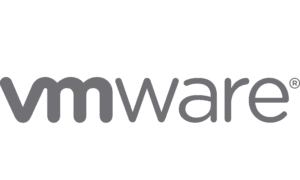
VMware
Best for advanced virtualization infrastructure
VMware is a leading virtualization provider, popular for its wide range of solutions for businesses of all sizes. Since its founding in 1998, the company has been focused on innovation that transforms industries and to date, it continues to develop new solutions with an eye on the future.
VMware customers enjoy the benefits of a strong partner ecosystem. The partner ecosystem offers hardware, software, and services.
Top VMware desktop virtualization solutions include:
- Horizon.
- Horizon Cloud.
- Workspace ONE.
- Workspace ONE Unified Endpoint Management.
Each one of these products is available in different plan options.
VMware desktop hypervisors for managing apps in a local virtualization sandbox include:
- Fusion for Mac.
- Workstation Player.
- Workstation Pro.
VMware’s flagship virtualization product is vSphere. It is an enterprise workload platform where users can run multiple virtual machines (VMs) on a single physical server. The platform provides the basic infrastructure for virtualization and includes features for resource management, storage management, and networking.
VMware also offers a wide range of products for app development, cloud and edge, disaster recovery, cloud management, security, and networking.
Pricing
VMware prices are cost-effective and competitive. Here’s a comparison of VMware virtualization products and pricing packages:
- Horizon Apps Standard: Starts at $4.67 per user per month.
- Horizon Standard Plus: Starts at $5.79 per user per month.
- Horizon Apps Universal: Starts at $6.00 per user per month.
- Horizon Enterprise Plus: Starts at $10.71 per user per month.
- Horizon Universal: Starts at $12.50 per user per month.
Pricing information for other products, such as vSphere in its different versions, is available upon request.
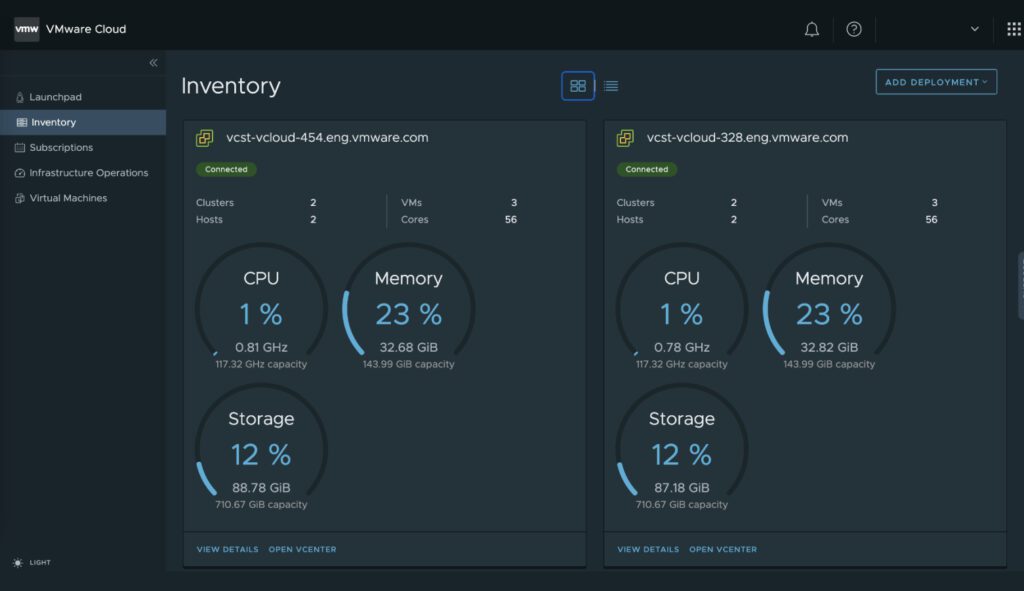
Features
vSphere’s main features include:
- Centralized cloud console: Empowers IT teams by consolidating management and improving visibility.
- Kubernetes: Users can run the Tanzu Kubernetes Grid service directly on vSphere to simplify the operation of on-premises Kubernetes.
- AI and ML: Users can enhance the performance of large AI/ML workloads with support for up to eight vGPUs per VM and 32 passthrough devices per VM, as well as the deployment of NVLink and NVSwitch technology.
- Advanced lifecycle management: Cloud consumption, VMs, and user management and profiles.
- vSphere Green Metrics: Tracks energy consumption to meet carbon emission targets and identify opportunities.
Key features of VMware’s Horizon desktop virtualization solutions include:
- Deployment support: Rapid deployment of virtual desktops with simplified management, end-to-end visibility, and centralized dashboards.
- Flexible deployment: Users can deploy on cloud, edge, and on-premises.
- Modern management: Users can build and move full-featured, personalized virtual desktops and apps into production with instant clone technology, VMware App Volumes, and VMware Dynamic Environment Manager.
Pros
- Innovative technology and a variety of relevant products.
- Leading provider with an excellent ecosystem.
- Rapid deployment, migration, and performance management tools.
- Optimized for enterprise-level workloads.
- Users can efficiently create and manage virtual machines and virtual desktop environments for medium-to-large operations.
- State-of-the-art technology for backup, recovery, security, privacy, and compliance.
Cons
- Too many products can make it difficult for users to select the best fit.
- Can be an overwhelming ecosystem for new users.
- Requires advanced skills to leverage full benefits.
- Can be expensive for small companies.
For more information, read our VMware vSphere Review: Software Features & Price.
Citrix
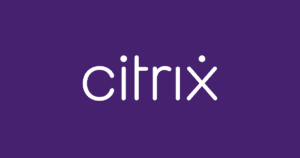
Best for consolidating virtualized environments
In the past several years, Citrix has grown from being an innovative small company to establishing itself as a dominant player in the virtualization market. Its solutions, ease of use, flexibility, and security make the brand popular among developers and companies that want to centralize their virtualized environments.
Citrix products support multiple operating systems and offer migration and deployment features, VMs, and virtual desktop management. Its flagship products are the Citrix Hypervisor and the Citrix Virtual Apps and Desktops, which is now called Citrix DaaS.
The company also offers networking, analytics, security, and endpoint management solutions. Citrix clients include organizations working in healthcare, education, government, fintech, manufacturing, and retail, as well as data centers and cloud providers.
Pricing
Pricing information listed below covers Citrix Hypervisor and Citrix DaaS, the new name for Citrix Virtual Apps and Desktops:
- Citrix DaaS Standard: $10 per user per device per month, based on 500 users and a pay-as-you-go monthly subscription.
- Citrix DaaS Advanced Plus: Between $10.22 and $12.75 per user per device per month. Additional discounts may be available for more than 2,500 users.
- Citrix DaaS Premium: Between $15.32 and $19.13 per user per device per month. Additional discounts may be available for more than 2,500 users.
- Citrix DaaS Premium Plus: Between $17.88 and $22.31 per user per device per month. Additional discounts may be available for more than 2,500 users.
- Citrix Hypervisor: Free and natively available for all Citrix DaaS customers.
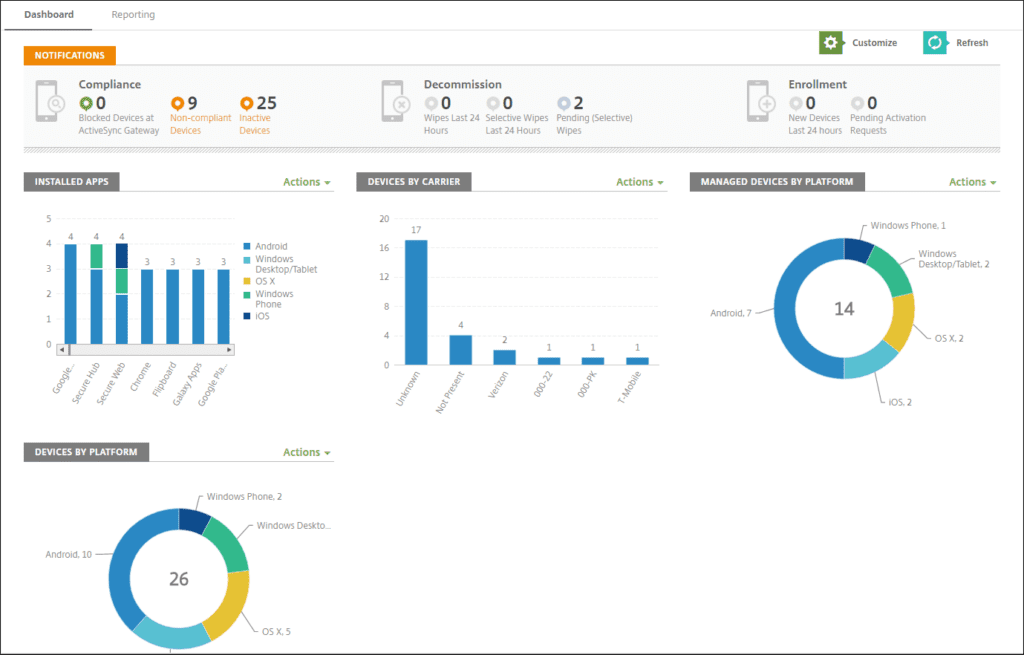
Features
- Deployment technology: Features for rapid deployment of virtual environments.
- Centralized management for cloud, edge, and on-premises: Empowers IT teams with simplified cloud management and turnkey public cloud delivery as well as integration with on-premises and edge resources.
- Performance: Offers workloads with rapid provisioning, efficient cloud management, and solutions designed to support hybrid work.
- Access: Provides secure, on-demand access to Windows and Linux apps on a variety of device types and operating systems, including Windows, Mac, Linux, iOS, Android, and web browsers. Delivers multi-user virtual desktops from both Windows and Linux in public clouds and on-premises and provides secure remote access to physical PCs and laptops.
- Hybrid cloud features: Can deploy workloads from multiple public and/or private clouds, including Azure, Amazon Web Services, Google Cloud, VMware vSphere, Nutanix Acropolis, Microsoft Hyper-V through SCVMM, and Citrix Hypervisor. This is all available within a unified management console.
- Citrix HDX: Virtual desktop users can view and use even the most resource-intensive content and features, such as 3D graphics, multimedia, real-time voice, and video collaboration.
- Digital workspaces: A cloud-based digital workspace service that delivers secure access to data and apps for each employee’s specific role on any device.
- Advanced security: Advanced security and compliance features are available for VDI and VMs.
Pros
- Modern, centralized, and easy-to-use solutions.
- Citrix Hypervisor is included with Citrix DaaS.
- Cost-effective.
- Serves small, medium, and large companies.
- Citrix features are designed to deliver high-performance applications and desktops to users, even over slow or congested networks.
- Features are flexible and can be deployed on-premises, in the cloud, or in a hybrid environment.
- Citrix solutions are scalable to meet the needs of even the largest businesses.
Cons
- Its products are not expensive, but other vendors offer cheaper solutions.
- The technology requires advanced knowledge to set up and use effectively.
For more information, read our Citrix Hypervisor review.
Microsoft

Best for Microsoft integration
From SMBs to large enterprises and government organizations, Microsoft virtualization solutions are popular among those who are familiar with the brand´s suite of technologies.
Microsoft virtualization technologies are scalable, secure, flexible, and powerful. Users also benefit from the wide range of support and resources that the brand offers. Additionally, Microsoft is constantly on the cutting edge of innovation, making its products attractive for companies that want access to the newest technologies at a reasonable price.
Microsoft virtualization flagship products include:
- Azure Virtual Machines: Users can create and manage VMs hosted in the cloud. This is a fully-managed service, which means Microsoft takes care of the underlying infrastructure, including the physical hardware, networking components, and storage. Azure VMs are available in a variety of sizes and configurations to meet the needs of different workloads.
- Hyper-V: Microsoft’s hypervisor that is used to create VMs on physical Windows servers is not only free but is also an open-source hypervisor. While it is not a managed service, developers and companies often use it to keep full ownership of their VM infrastructure and desktop virtualization systems.
Pricing
Microsoft plans are available under the Azure pay-as-you-go pricing model. Because of Microsoft’s pricing model, plans and licenses can be difficult to understand and estimate.
While VMs can be as low as $0.004 per hour, scaling up without properly understanding how the pricing plans work can be costly and result in unnecessary and overlapping solutions.
Speak with a Microsoft sales team member before committing to ensure you understand the pricing model and solution that makes the most sense for your organization.
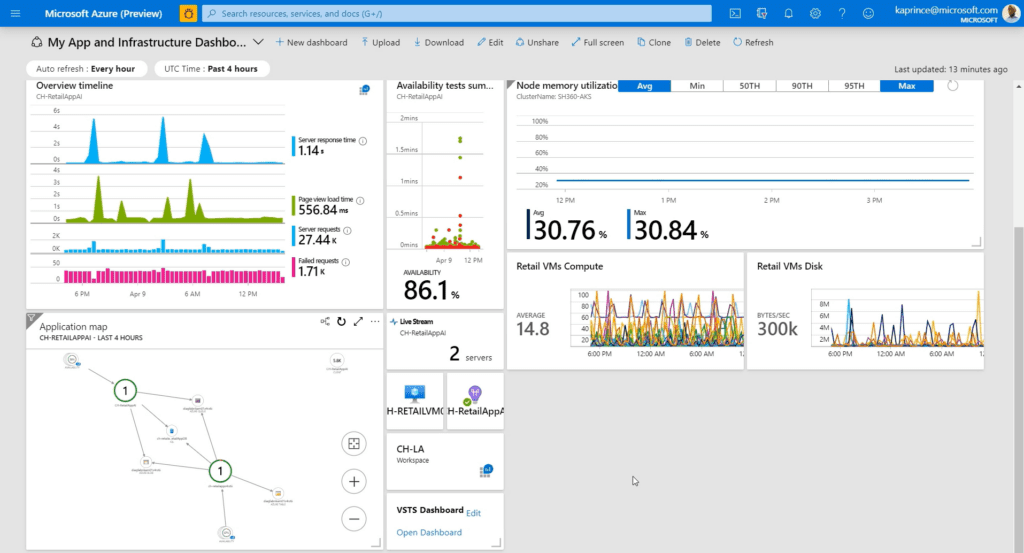
Features
- VM deployment: Features are available for the rapid provisioning of Windows and Linux VMs.
- Hybrid environments: Users can run applications in the cloud or their own data centers with seamless hybrid cloud support.
- Visualization: With the help of Azure Monitor, virtualization products provide dashboards to visualize cloud data, risks, and health.
- Backup: Simplified data protection with Azure Backup.
- Hardware virtualization: Microsoft Hyper-V is a robust hypervisor that creates and manages virtual machines from hardware.
- Migration and replication: Migration and replication features support smoother transitions and digital transformation projects.
- Shielded virtual machines: Shielded virtual machines provide additional security by isolating VMs from the host and other VMs.
Pros
- Azure VMs are available in many regions around the world. This can be useful for businesses that need to manage a global presence.
- Azure VMs are cost-effective if users understand how the pay-as-you-go model works.
- Azure VMs are highly available, designed to stay up and running even if there is a failure in the underlying hardware or software.
- Free and open-source solutions are available.
- State-of-the-art security and automated compliance.
Cons
- Microsoft proprietary technology can lead to vendor lock-in.
- Payment and licensing models are difficult to understand.
For more information, read What Is Azure VM? Windows Virtual Machine.
Oracle
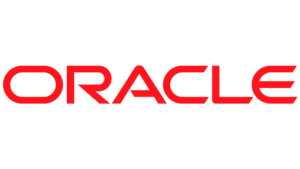
Best for Linux developers and sophisticated operations
Oracle virtualization products are the first choice for developers that work with Linux and want to leverage the benefits of open-source platforms and technologies. Oracle is also one of the most trusted names in the IT industry, offering a diverse portfolio of solutions for networking and cybersecurity.
Oracle solutions can be used to create and manage VMs and virtual desktops. Oracle also provides the free, open-source OS Oracle Linux, which is heavily used by enterprises. Its top-selling virtualization product is Oracle VM VirtualBox.
Pricing
Oracle offers a free virtual machine license for personal, educational, or evaluational use. Support, business, and commercial licenses are paid and require a total minimum order of $6,100.
Licenses are perpetual and available at the following prices from the Oracle Store:
- $50 for every Named Workstation (VM) with a minimum buy of 100 Named Workstations.
- Software Update License and Support cost $11.00 per workstation per year.
- The perpetual license can also be acquired at a price per socket of $1,000 for each socket, with a yearly fee of $220.00 for Software Update License and Support.
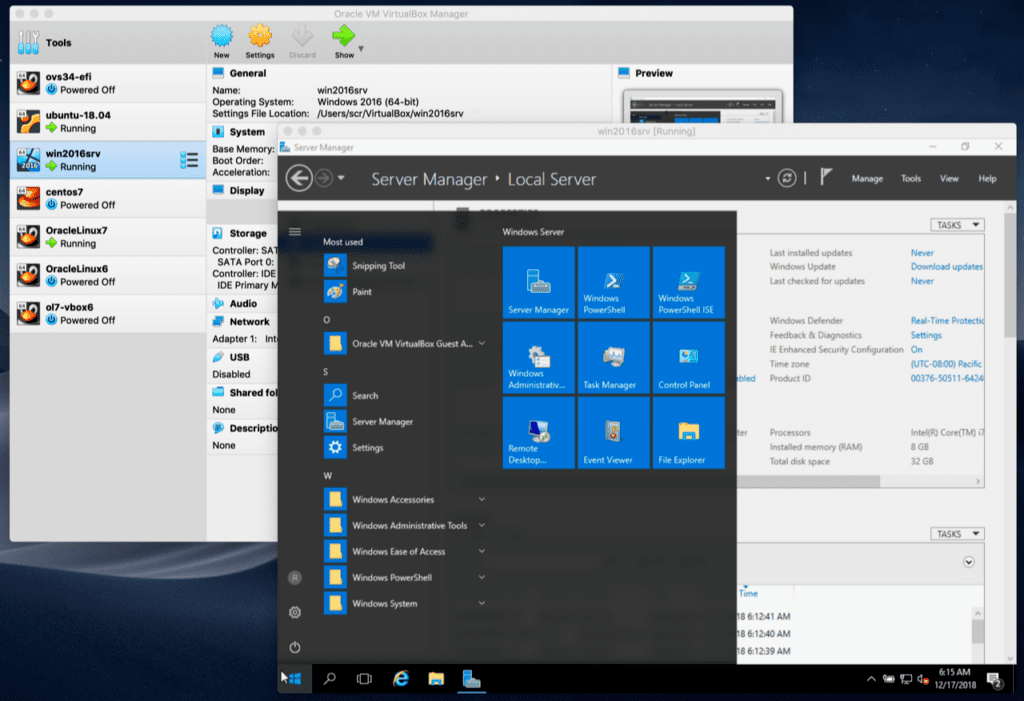
Features
- Open architecture with leading performance: Open-source environment with enterprise-grade performance and support from Oracle.
- Comprehensive virtualization: Offers a wide range of features, including server virtualization, desktop virtualization, and cloud virtualization.
- Support for various workload types: Highly scalable and can be used to support a wide range of workloads, from small businesses to large enterprises.
- Hypervisor: Open-source, optimized hypervisor.
- Administrative management capabilities: Simplified management with Oracle Linux Virtualization Manager.
- Virtual desktops: Open-source desktop virtualization software lets users develop on any desktop and deploy to any cloud.
- Efficiency and availability: Support x86 and SPARC, plus a variety of workloads such as Linux, Windows, and Oracle Solaris.
Pros
- Personal license is free.
- Easy to use and intuitive user interface.
- Open-source solutions.
- Perpetual licensing.
- Trusted, high-performing, secure, and widely available.
- Excellent support from a global community of users.
Cons
- Some licenses can be expensive for small companies.
- Support is not included in the free license options.
- To leverage the top benefits of the platform, advanced skills are required.
For more information, read the Oracle VM VirtualBox Review.
Key features of virtualization software
The virtualization market has consolidated to meet modern demands. Today, all top vendors offer several features that are standard for all virtualization offerings. These features may differ in how they are presented and what approach a company brings to the technology, but without some form of them, no virtualization company can compete in the market.
Virtual machines
Creating and managing virtual machines (VMs) is fundamental for virtualization environments. VMs help companies better manage their resources, reduce costs, improve visualization and performance, and drive security and compliance. Desktop virtualization is only possible thanks to VMs.
On-premises, edge, or cloud support
Virtualization vendors offer solutions that can be readily deployed in hybrid cloud environments, edge data centers, and on-premises environments. While cloud environments dominate in the sector, some companies — especially large enterprises — rely on mixed environments and on-premises operations.
OS support
Virtualization requires support for various operating systems. Whether it be the VM or the virtual desktop that’s being deployed, companies may prefer to use Linux, Windows, Mac, or another OS. Leading virtualization companies offer support for a wide range of systems.
Centralized management
From VM usage, history, and performance to security, compliance, and user profiles, the main benefits of virtualized environments are possible thanks to increased visualization and centralized management. Vendors offer single-source-of-truth dashboards for IT teams to rapidly deploy, manage, update, and optimize system-wide resources.
Network management
A key component of virtualization is connectivity and networking. To secure performance, networks must be properly configured and set up. They must also be able to scale up when peak traffic hits and user counts increase.
Additionally, network management is fundamental for cybersecurity and privacy. Authentication, user and device profiling, and public resources are all important network management functions and vital technologies for the virtualization sector.
Virtual desktops
Virtual desktops — persistent or non-persistent — allow organizations to deliver a system, OS, data, files, and apps to its users and partners while fully controlling it. Virtual desktops have become a norm in today’s hybrid work world and can safely connect all parties to the same system. While all vendors enable users to create and manage virtual desktops, leading companies provide high levels of customization and excellence in performance.
How to choose the best virtualization software for your business
There are several factors that need to be considered before a company decides which vendor is the best virtualization vendor fit for their business. The first and most important step decision-makers can take is to reach out to subject matter experts — most often, their IT teams — to make sure that they will be making informed decisions about what products to use and vendors to partner with.
Second, all companies, no matter their size, need to clearly lay out their business objectives. They must answer several questions, such as the following:
- Why do we need virtualization?
- What are we trying to achieve?
- What are our business goals?
Technology for the sake of innovation serves no purpose at all; it must be utilized in service of a goal.
Other factors to consider include budget, support availability, vendor lock-in, OS compatibility, and security and compliance.
In most cases, the technical aspects of this decision should be left in the hands of IT leaders and their teams, as they know what tools they need to get the job done.
Frequently Asked Questions (FAQs)
What is virtualization?
Virtualization is the process of creating virtual versions of hardware and software resources. Technologies for virtualization include virtual machines, virtual desktops, and virtual network management tools.
What are the benefits of virtualization?
Virtualization has numerous benefits. It allows companies to maximize resources, enables data centers to better allocate hardware, and enables companies to more rapidly deploy software, operating systems, and applications. Using virtualization, companies reduce can hardware and software costs, streamline maintenance, and give their IT teams the right tools to run centralized and complex environments.
What is a hypervisor?
A hypervisor is a specialized software, firmware, or hardware solution that is used to create and manage virtual machines.
Methodology
To write our review of the top virtualization companies, we evaluated their features, strengths, and weaknesses and examined sites that aggregate data based on verified user reviews. We also relied on our experience with the vendors’ software and test-drove virtualization technologies whenever possible. Additionally, we read through the companies’ official sites and product documentation.
Bottom line: Server virtualization in your organization
Whether your company employs a global team of talent, needs to provide special access to partners, or works in healthcare or the government sector, virtualization is a perfect fit. These technologies can drive business outcomes, consolidate your digital assets, break silos, and increase security.
By creating virtualized environments and working with the top virtualization companies, enterprises can stay on the cutting edge of innovation, scale up or down, and become more data-driven.
If you’re developing virtualized infrastructure, make sure you back up your data with one of the best VM backup solutions on the market.

